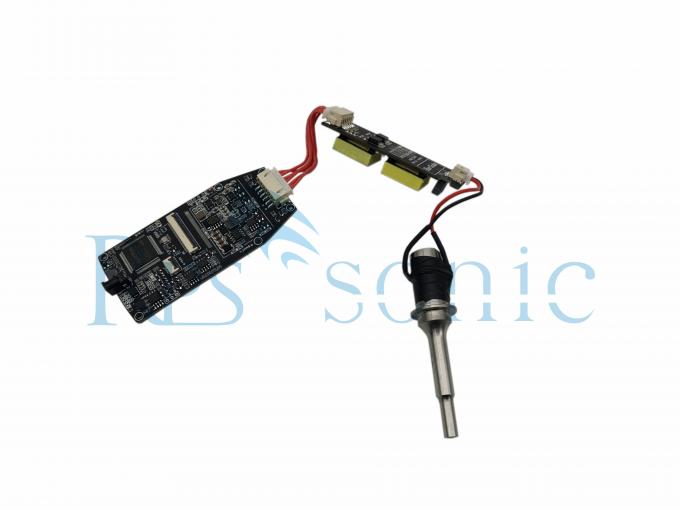28 khz miniature ultrasonic transducer for ultrasonic Cell disruption instrument
Parameter
Introduction
This miniature ultrasonic transducer was design and producing by RPS-SONIC, and this transducer was design for cell disruption( lab ultrasonic liquid process ). The frequency is 28khz, the diameter only 16mm.Sonication is the act of applying sound energy to agitate particles in a sample, for various purposes such as the extraction of multiple compounds from plants, microalgae and seaweeds. Ultrasonic frequencies (>20 kHz) are usually used, leading to the process also being known as ultrasonication or ultra-sonication.In the laboratory, it is usually applied using an ultrasonic bath or an ultrasonic probe, colloquially known as a sonicator. In a paper machine, an ultrasonic foil can distribute cellulose fibres more uniformly and strengthen the paper.Sonication has numerous effects, both chemical and physical. The chemical effects of ultrasound are concerned with understanding the effect of sonic waves on chemical systems, this is called sonochemistry.[3] The chemical effects of ultrasound do not come from a direct interaction with molecular species. Studies have shown that no direct coupling of the acoustic field with chemical species on a molecular level can account for sonochemistry or sonoluminescence. Instead, in sonochemistry the sound waves migrate through a medium, inducing pressure variations and cavitations that grow and collapse, transforming the sound waves into mechanical energy.
Why RPS-SONIC TRANSDUCER:
1. Every transducer with a only tracking number, you can check the parameter from our saler no matter how long it passed.
2. All transducer with one year warranty.
3. Specialized in ultrasound for more than ten years
4. Every transducer with 24hours old testing before shipment.
5. Good packing, no packing problem during the 10 years exporting business.
6. Every customer will get purchase records and there are certain rewards after accumulation
Service and shipment
- Warranty one year for transducer.
- You can contact us for technical inquiry any time.
- We supply OEM service for oversea customer, also will keep Confidentiality for our customers.
- We supply customized products service for small quantity also.
- Shipment by FED-EX /DHL/UPS/TNT
